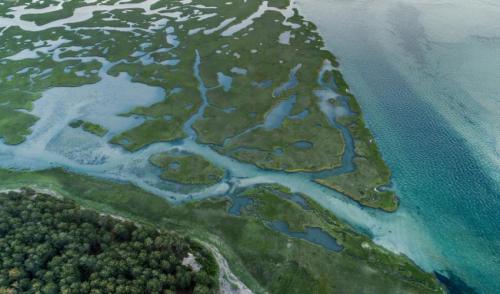Nations fall short on biodiversity despite protected area growth – IUCN co-authored study
National governments have fallen short on delivering conservation commitments for protected and conserved areas under the UN Convention on Biological Diversity (CBD), despite the expansion in protected areas over the last decade, according to a new analysis.

Led by Dr Sean Maxwell of the University of Queensland and co-authored by members of IUCN’s World Commission on Protected Areas, the paper analyses whether growth in protected areas between 2010 and 2019 has led to better protection for natural ecosystems, threatened species and ecosystem services. Over this period, the percentage of the Earth’s surface covered by protected areas increased from 14.1% to 15.3% on land, and from 2.9% to 7.5% in the marine realm.
The authors find that this growth in area has had limited success in protecting biodiversity and ecosystem services globally. For example, only 21.7% of species assessed as threatened with extinction on the IUCN Red List of Threatened SpeciesTM were adequately represented within protected areas in 2019 – up from 18.9% in 2010. A third of Key Biodiversity Areas – areas that contribute substantially to the global persistence of biodiversity – and more than half of all ecosystems on land and sea remained without adequate protection in 2019, according to the paper.
“We reviewed progress towards CBD conservation targets by overlaying maps of protected areas on natural ecosystems, threatened species, carbon services on land and sea, and fisheries productivity in the world’s oceans. Our findings provide conclusive proof of the need to focus on what, where and how we protect, not just on how big an area we protect,” said Dr Sean Maxwell of the University of Queensland, lead author of the study.
“Nearly every nation on Earth has agreed that, by 2020, protected and conserved areas must cover at least 17% of land and 10% of the ocean, and be located in areas that are important for biodiversity and ecosystem services, in line with CBD commitments. Our results conclusively show that just increasing the area under conservation management is not enough. Protected and conserved areas need to effectively safeguard environments important to threatened species; and despite almost reaching 17% terrestrial coverage this is still clearly not the case at the moment”, said Dr Stephen Woodley, IUCN’s World Commission on Protected Areas Vice Chair for Science and Biodiversity, one of the study’s co-authors.
Since global environmental targets were agreed under the CBD in 2010 there has been some welcome progress in expanding protected areas, particularly in the marine realm, with increased protection for corals and many other marine species. However, the study concluded that the seven most productive pelagic regions for fisheries catch have no formal protected area coverage, and found significant shortfalls in ‘ecological representation’ (protection of threatened species), management effectiveness and measurable biodiversity outcomes for protected and conserved areas globally.
“Most governments recognise the critical role of protected and conserved areas in stemming the biodiversity crisis,” said Dr Kathy MacKinnon, Chair of IUCN’s World Commission on Protected Areas. “This comprehensive study shows that, despite the great efforts of CBD countries in almost meeting the 2020 targets for protected and conserved areas, much remains to be done. We therefore call for ambitious new conservation targets in the post-2020 Global Biodiversity Framework. Protected and conserved areas need investment, legal support and to be valued as mainstream sustainable development tools through their delivery of vital ecosystem services. This applies to areas managed by government and by indigenous and local communities, as well as privately protected areas.”
After 2020, successful area-based conservation must contribute more effectively to meeting global biodiversity goals, as well as better collaborating with Indigenous peoples, community groups and private initiatives, the authors recommended.
Source: International Union for Conservation of Nature
- 280 reads
Human Rights
Ringing FOWPAL’s Peace Bell for the World:Nobel Peace Prize Laureates’ Visions and Actions

Protecting the World’s Cultural Diversity for a Sustainable Future

The Peace Bell Resonates at the 27th Eurasian Economic Summit

Declaration of World Day of the Power of Hope Endorsed by People in 158 Nations

Puppet Show I International Friendship Day 2020

